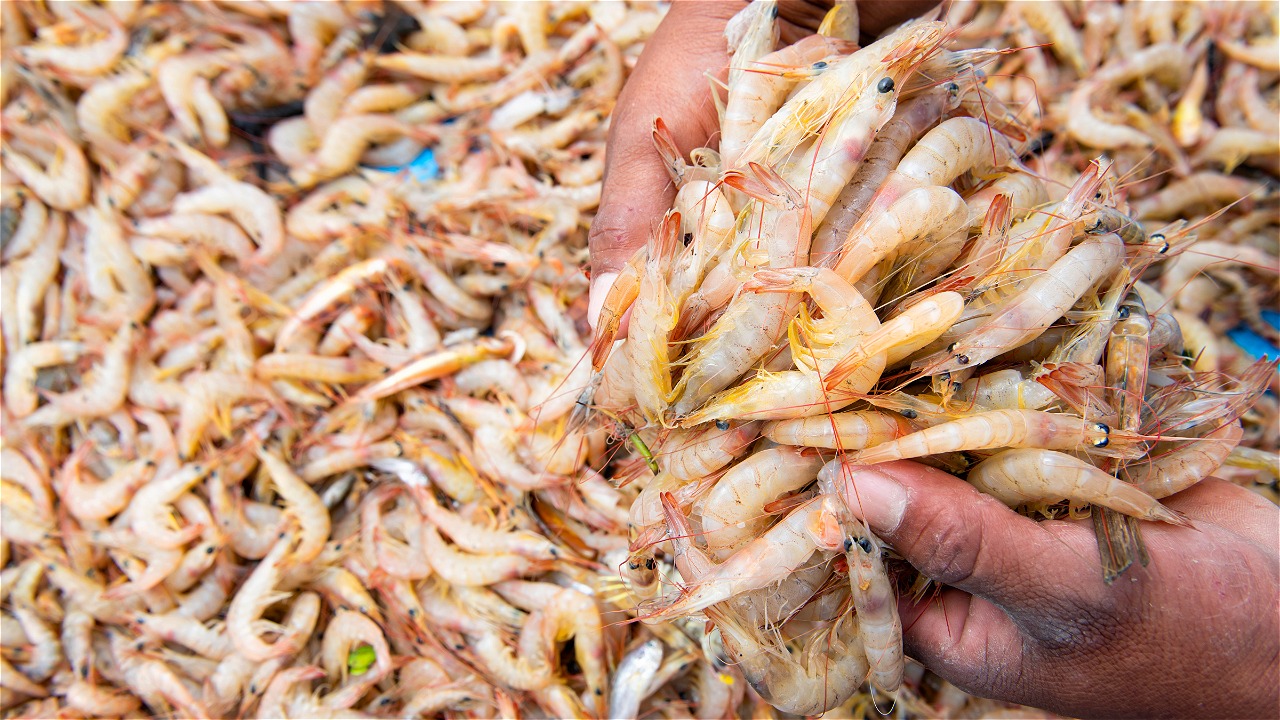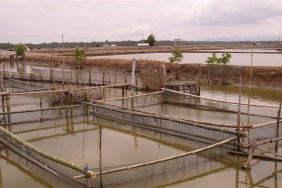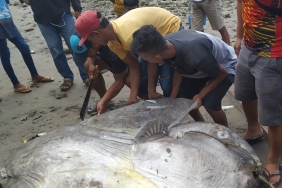ASIAN TIGER SHRIMP CULTIVATION BETTER MANAGEMENT PRACTICE (BMP) WARMLY WELCOMED BY PINRANG FARMERS
By Idham Malik
The huge potential of fishery cultivation in Pinrang, South Sulawesi, has made aquaculture team of WWF-Indonesia to initiate a socialization of BMP on asian tiger shrimp in the area. This program was conducted on march 18th 2014 in Wiring Tasi Village of Suppa Subdistrict, Pinrang District. WWF-Indonesia Coordinator of Aquaculture, Candhika Yusuf, stated a lot about WWF-Indonesia and its plans to improve the shrimp farming condition from issues such as mangrove land conversion, water pollution, the use of harmful materials, biosecurity, genetic pollution and social issue. This BMP also refers to internationally-standardized Aquaculture Stewardship Council (ASC) which aims to support the availability of responsible fishery products through third party certification.
This program was also involving several local figures such as Mr. Taufik (Asian tiger shrimp hatchery businessman who conducted many experiments on Pronima suppa), Mr. Nurdin (Pinrang District Head of Aquaculture Division Department of Marine and Fisheries), Professor Hatta Fattah (Muslim Indonesia University, expert of Pronima suppa) and Mr. Andi Budaya (Pinrang District Head of Department of Marine and Fisheries) who joined to support the program.
Although the cultivation practice of asian tiger shrimp has been passed down from generations, there are still many efforts needed to improve the current situtation. The farmers used to thrive in the 80s and 90s, but has been slowing down in recent years due to disease outbreaks mainly caused by environmental degradation. Today there are only 10 hatcheries that are still running in Pinrang. Other intensive ponds could not survive, leaving only the traditional ponds in the area.
The big potential in Pinrang is clearly seen on the production stat, where it experienced constant improvement from 2148 tons in 2007 to 2931 tons in 2012 (Pinrang District 2008-2012 Statistics Indonesia). Much of the shrimp production comes from 15,675 hectare of land scattered in five subdistricts: Suppa (2,203 ha), Lasinrang (1,560 ha), Mattirosompe (4,131 ha), Cempa (2,341 ha), Duampanua (5,101 ha), and Lembang (339 ha). Duampanua, despite having the largest area, is still pipped by its neighbour Suppa in terms of shrimp production. Suppa is capable on producing an average of 0.88 tons/ha/year while Duampanua could only reach 0.15 tons/ha/year.
The socialization of asian tiger shrimp BMP is closed by a statement from Mr. Taufik “This program has succeeded in bringing together stakeholders with various interests. The long-involved stakeholders hopefully could cooperate with new stakeholders on helping the farmers in Suppa”.
Translated by Imanda Pradana





